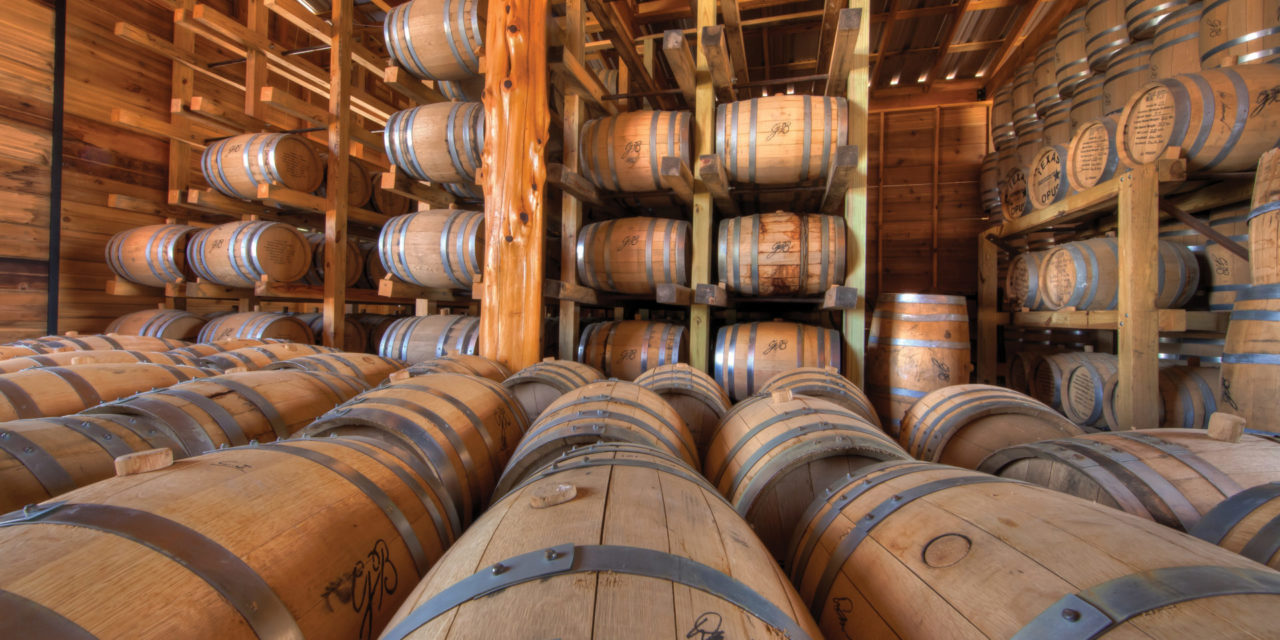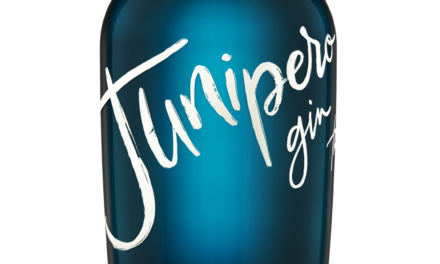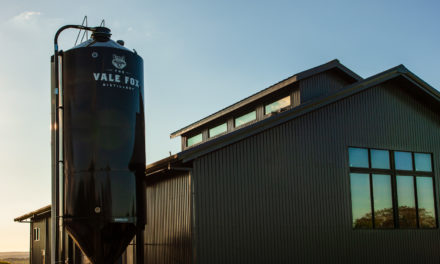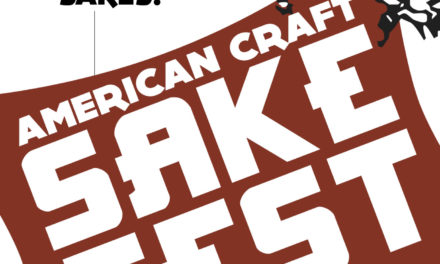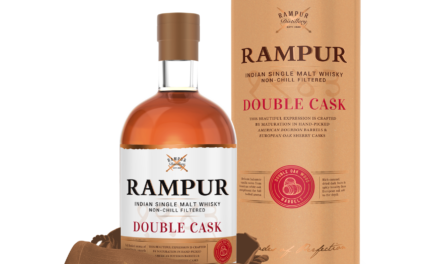In recent years, distillers have been experimenting with their products post-harvest and have found that water—a resource many think of as tasteless, colorless, and personality-free—can affect the flavor, texture, and ineffable essence of their spirits in surprising ways. In a way, these producers are returning to the roots of their profession: Is it a coincidence that whisky was essentially invented and developed in the coastal regions of Ireland and Scotland, or that rum was created on the island nation of Nevis?
Climate change, though, has transformed our relationship with water. As our dependence on it becomes simultaneously clearer and more tenuous, it’s fascinating to see how some producers are tackling the issue of water scarcity, while simultaneously using it to impact the flavor and feel of their finished products.
Harvesting Rainwater
By 2025, half of the world’s population will be living in water-stressed areas, according to the World Health Organization. Using groundwater to create spirits, in other words, will become increasingly difficult from a logistical and ethical standpoint. But clouds, at least for now, are up for grabs.
Hilton Head Distillery on Hilton Head Island, S.C., was co-founded in 2015 by Joe Fenten, an engineer by trade, who noticed the layers of clouds that often blanketed Hilton Head’s coast and wondered if the moisture within could be harvested.
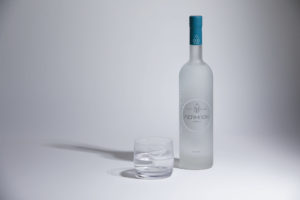
[Photo courtesy Hilton Head]
“We believe the water generated from the humidity in our seaside location provides a smoother, cleaner vodka with a subtle and sweet aroma, but we were also motivated to use this water because it’s more environmentally sound,” Thompson says. The water, he adds, is purer, with no dissolved solids: Hilton Head’s water is zero parts per million, whereas tap water runs between 50 and 200 ppm.
The clouds retain water vapor that’s renewable and relatively untapped. Hilton Head offers vodka, gin, four different flavored whiskeys, and several rums, and is operating at the 2,500-gallon level.
ZIGNUM MEZCAL
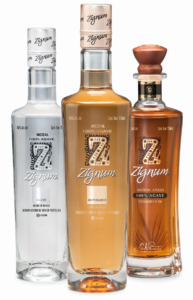
[Photo courtesy Zignum Mezcal]
“We are a Mexican, family-owned company with our distillery based in the heart of Oaxaca and our own agave Espadin fields,” says Zignum’s U.S. Commercial Director Saul Moise. “We are very proud of our Método Verde (Green Method) sustainability programs; in fact, one of our tag lines, ‘Puro Mezcal’ reflects this work. A favorite part for me, personally, is when we return the water to the earth.”
The mezcal and tequila industry has become an easy target for environmentalists who criticize its overuse of groundwater and its disposal of polluting wastewater in the community, so Zignum’s concerted push toward using what water it can from the rain, and its responsible recycling of wastewater, has earned it recognition from Mexico’s Federal Attorney for Environmental Protection.
GARRISON BROTHERS
Garrison Brothers Distillery in Hye, Texas, started harvesting rainwater in 2004 to proof its Texas Straight Bourbon Whiskey. Notes distillery founder Dan Garrison, “Every building in our distillery has a rain collection system designed to harvest rainwater.”
At any one time, up to 250,000 gallons of rainwater can be stored in tanks at the distillery. Before being used to proof the bourbon, Master Distiller Donnis Todd says, the water is filtered to eliminate mildew and bacteria.
Garrison Brothers is located in a region of Central Texas that gets an average 28 inches of rainfall per year. The motivation to collect rainwater went beyond the desire to be as sustainable as possible. “We use our collected rainwater to proof our bourbon down from cask-strength down to 94 proof,” Todd says. “We didn’t want to add any chemicals, just goodness.”
Ocean Aging
ROGUE ALES AND SPIRITS
Perched on the edge of Yaquina Bay, leading into the Pacific Ocean, Rogue Ales and Spirits in Newport, Ore., lets its barrels age “casually” in the 55°F-65°F weather, and the humid air that comes with 88 inches of rainfall per year, explains Brian Pribyl, head distiller.
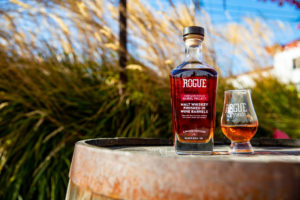
[Photo courtesy Rogue Ales & Spirits]
How does that translate into the glass? “Our whiskeys tend to be softer, more elegant,” Pribyl says. “They have layered, subtle notes of smoke, briny sea air, and barrel oak when compared with malt whiskeys that are aged away from the sea.”
JEFFERSON’S BOURBON
The first spirits known to man, in Ireland and Scotland, were aged by the salinic sea breezes, which affected their color and flavor, says eighth-generation Kentucky bourbon maker Trey Zoeller. He takes that philosophy several leagues farther.
“I’ve always spent as much time as possible on the ocean, surfing and catching fish,” Zoeller says. “The idea of using the ocean’s motion, and the influence of the salty breeze to age bourbon, occurred to me when I was on a boating trip for my 40th birthday.”
Zoeller was in Costa Rica, aboard the boat of friend and oceanic researcher Chris Fischer, when he noticed bourbon in a bottle on deck swaying to the rhythm of the waves. Light-bulb moment: Zoeller decided to see if putting barrels of whiskey on board a ship could accelerate the maturation process by increasing the contact between the spirit and the wood; he also wondered how the swings in weather and the salty sea air would affect the flavor and texture.
In 2008, he persuaded Fischer to let him put a few barrels on board his research vessel Ocearch, with the promise of auctioning some off to fund future investigations in oceanic health. Since then, his barrels have set out on 20 different voyages that have visited five continents in ports as far north as Scandinavia and as far south as Africa’s Cape of Good Hope. Each one tastes different, he says, with the ocean lending more saline here, more caramelization there. Of the 19 products Jefferson has in its lineup, Jefferson’s Ocean comprises about 15 percent to 20 percent of its sales any given year.
“After three or four years at sea, the neutral bourbon will return black, thick, and delicious,” Zoeller explains. “[The climate] takes out the astringency of the alcohol, adds viscosity to the texture, and introduces a salted, caramel element. My favorite part, aside from the taste, is that we’re able to help Ocearch track maritime health.”
The terroir of wine has been studied, celebrated, and debated for centuries. And while there isn’t a precise word that summarizes the influence of natural elements on spirits in the production facility, it is just as palpable. Chemist Thomas Collins and his colleagues at the University of California analyzed 70 American whiskeys. They determined that where and how a product was distilled and aged can have a significant influence on the final product’s taste. Water doesn’t look like much, but its power is transformative.

